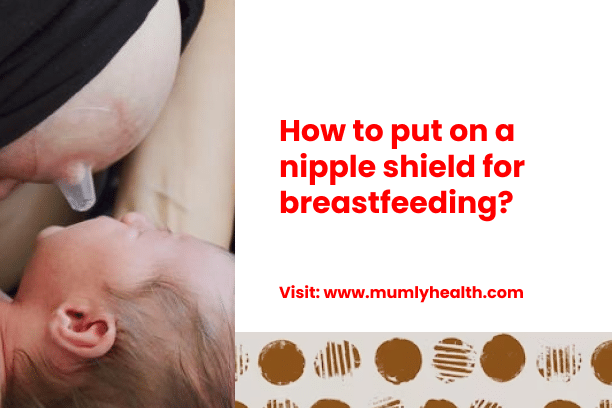A nipple shield is a silicone apparatus placed over the nipple to aid infants who encounter difficulties during breastfeeding (also known as chestfeeding or nursing). It comprises a base encircling the areola (the skin surrounding the nipple) with a cone-shaped section designed for the nipple. Some nipple shields feature a cutout section to enhance skin-to-skin contact between the parent and baby. The nipple portion of the shield contains small perforations at the tip, enabling milk to flow into the baby’s mouth. Typically, nipple shields are thin, pliable, and see-through.
The purpose of using a nipple shield is to assist newborns who struggle to nurse effectively, often due to a poor latch or other related issues. Discontinuation of nipple shield use occurs once the baby improves at nursing and breastfeeding challenges are resolved. Nipple shields are considered a final option when other strategies for establishing breastfeeding prove unsuccessful. They should only be employed temporarily and under the supervision of a healthcare professional or lactation consultant.
When do people use nipple shields?
Families often turn to nipple shields during the initial weeks after birth when their baby is in the process of learning to breastfeed. In these early stages, some babies encounter difficulties in latching onto the breast due to various reasons. This challenge may result in inadequate milk intake for the baby and subsequently, poor weight gain. Introducing a nipple shield can offer the baby additional time to grasp nursing techniques or enhance their sucking ability.
For parents committed to breastfeeding, utilizing a nipple shield enables them to sustain breastfeeding practices and avoid resorting to bottle feeding or transitioning to formula.
It is advisable to consult with a lactation consultant before resorting to a nipple shield. Consultants typically explore alternative methods to enhance breastfeeding before suggesting the use of a nipple shield. As your baby becomes more proficient at nursing and breastfeeding becomes more manageable, your lactation consultant can guide you in discontinuing or gradually reducing reliance on the nipple shield.
What does a nipple shield help with?
A nipple shield plays a crucial role in facilitating your baby’s latch during breastfeeding. The term “latch” refers to how your baby’s mouth attaches to both your nipple and areola while nursing. A proper latch enables your baby to effectively empty the breast and receive an adequate amount of milk during feeding sessions. Conversely, an improper latch often leads to discomfort during breastfeeding, as the baby may only suck on the tip of the nipple rather than encompassing the entire areola in their mouth.
Using a nipple shield may be beneficial in the following situations:
- Your baby is born prematurely and may lack the strength to suckle or latch onto the nipple.
- Your baby experiences conditions such as tongue-tie, tongue thrust, or a retracted tongue, which may hinder effective latching but can improve with time or intervention.
- You have inverted, short, or flat nipples, and the shield helps elongate and firm up the nipple for better latch-on.
- Your breasts are exceptionally soft, and the shield provides additional support and firmness.
- Your baby requires extra stimulation to initiate sucking, and a longer nipple provided by the shield can stimulate the roof of their mouth, where the suck reflex is triggered.
- Your nipples are sore, cracked, or bleeding due to poor latch, and wearing a shield can aid in the healing process.
- You experience an overactive let-down, which refers to the initial flow of milk from the nipple.
- You’re transitioning your baby from bottle feeding to breastfeeding.
Before using a nipple shield, it is advisable to consult with a lactation consultant. They will assess your baby’s latch and nursing position to determine if a nipple shield is truly necessary. In many cases, minor adjustments can be made to prevent the need for a nipple shield altogether.
Read Also: Newborn hiccups after feeding: Baby hiccups Solutions.
